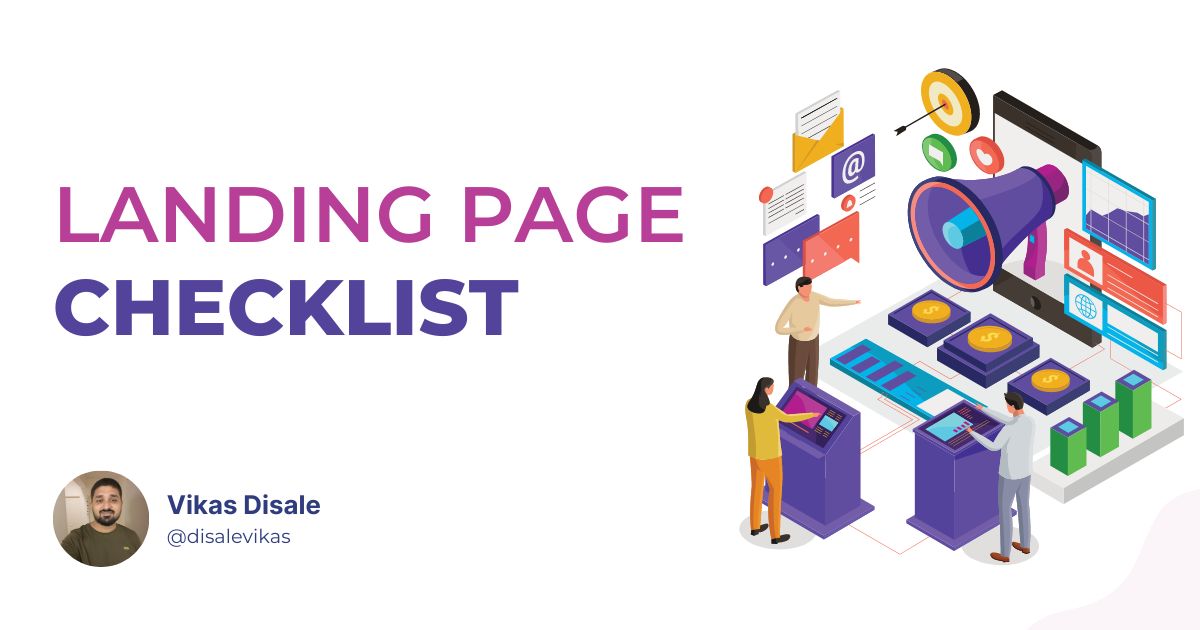When you’re running Google Ads, every click counts.
But securing that click is just the beginning.
Did you know that a well-optimized landing page can boost your conversions by up to 300%?
On the flip side, over 50% of visitors will leave a page if it takes longer than 3 seconds to load.
That’s why your landing page is the true make-or-break point for turning visitors into customers.
Think of it as your digital storefront—if it’s not engaging, clear, and user-friendly, potential customers will bounce before you even have a chance to showcase your offer.
In this post, I’m going to walk you through a comprehensive checklist for optimizing your landing page specifically for Google Ads.
Whether you’re just starting out or looking to refine your existing pages, this guide will help you maximize conversion rates and get the most value from your ad spend.
Let’s dive in and transform those clicks into loyal customers!
1. Relevance
- Align Headline with Ad Copy: Your landing page headline should closely match the ad copy to maintain relevance. This consistency helps improve your quality score and reassures visitors that they are in the right place.
- Consistent Messaging: Ensure the message is clear and consistent throughout the landing page to avoid confusing users and to maintain their interest.
2. User Experience (UX)
- Page Speed: Speed is critical. A landing page that loads in under 3 seconds can significantly reduce bounce rates. Use Google PageSpeed Insights to ensure your page meets this standard.
- Mobile Optimization: In today’s mobile-first world, your landing page must be fully responsive and look great on all devices, particularly smartphones.
- Easy Navigation: A clean, clutter-free layout with straightforward navigation ensures users can easily find the information they need without distractions.
3. Content Quality
- Clear Call-to-Action (CTA): A strong, visible CTA should be placed above the fold, making it clear what action the user should take next.
- Value Proposition: Highlight the benefits of your product or service using concise, bullet-pointed lists to make it easy for users to grasp the value you’re offering.
- Trust Signals: Incorporate trust badges, testimonials, and reviews to build credibility and reassure potential customers.
- Minimal Distractions: Keep the focus on the primary goal of the page by avoiding unnecessary links or elements that could divert attention away from the CTA.
4. Conversion Optimization
- Forms: Simplify forms by only asking for essential information. Use auto-fill features to make the process smoother for users.
- A/B Testing: Regularly test different versions of your landing page to identify what works best, including variations in headlines, images, and CTA buttons.
- Retargeting Pixel: Install a retargeting pixel to capture and remarket to visitors who don’t convert on their first visit.
5. Search Engine Optimization (SEO)
- Relevant Keywords: Optimize your landing page content for the keywords targeted in your Google Ads campaign.
- Meta Tags: Use compelling and relevant meta titles and descriptions, which can also enhance your page’s organic search presence.
- Internal Linking: Provide links to other relevant pages on your site to assist with SEO and user navigation.
6. Legal Compliance
- Privacy Policy: Clearly display a link to your privacy policy, especially if you’re collecting user data.
- Cookie Consent: Ensure your page complies with GDPR or other relevant data protection laws by including a cookie consent banner if necessary.
7. Technical Aspects
- Analytics Setup: Verify that Google Analytics and Google Tag Manager are correctly implemented to track conversions and user behavior.
- 404 Errors: Regularly check for and eliminate broken links or 404 errors that could negatively impact user experience.
- Cross-Browser Compatibility: Test your landing page across various browsers to ensure it functions properly on all platforms.
8. Ad Extensions Alignment
- Sitelinks: Ensure that any sitelinks included in your ads are relevant and point to appropriate content on your landing page.
- Call Extensions: If using call extensions, make sure the phone number is prominently displayed and easily accessible on the landing page.
9. Compliance with Google Ads Policy
- Avoid Restricted Content: Ensure your landing page adheres to Google Ads policies, avoiding content that could lead to disapproval (e.g., misleading claims, inappropriate content).
- Transparency: Clearly communicate the nature of your business and the products or services you offer to build trust with your audience.
10. Continuous Monitoring
- Heatmaps and Session Recordings: Utilize tools like Hotjar to gather insights into user behavior on your landing page.
- Conversion Tracking: Keep a close eye on your conversion rates and be ready to make adjustments to improve performance.
- Feedback Loop: Continuously collect feedback from users to identify areas for improvement and implement changes.
Conclusion
Optimizing your landing page isn’t just a one-time task—it’s a continuous process that directly impacts the success of your Google Ads campaigns. A well-optimized landing page can significantly boost your conversion rates, improve your quality score, and ultimately drive more revenue.
By following this comprehensive checklist, you’re ensuring that every click counts, turning potential leads into loyal customers. From aligning your headline with ad copy to optimizing for mobile users and speeding up page load times, each step plays a crucial role in maximizing your ad spend.
Remember, a strong landing page is the cornerstone of any successful digital marketing strategy. So, take the time to refine, test, and improve your pages regularly. The payoff in terms of increased conversions and improved ROI will be well worth the effort.
If you’re ready to take your Google Ads campaigns to the next level, start implementing these tips today—and watch your results soar!
Vikas Disale is Digital Marketer and practicing SEO, Social Media, Paid Ads since 2011. Vikas like to share his knowledge via Podcast, YouTube videos.
